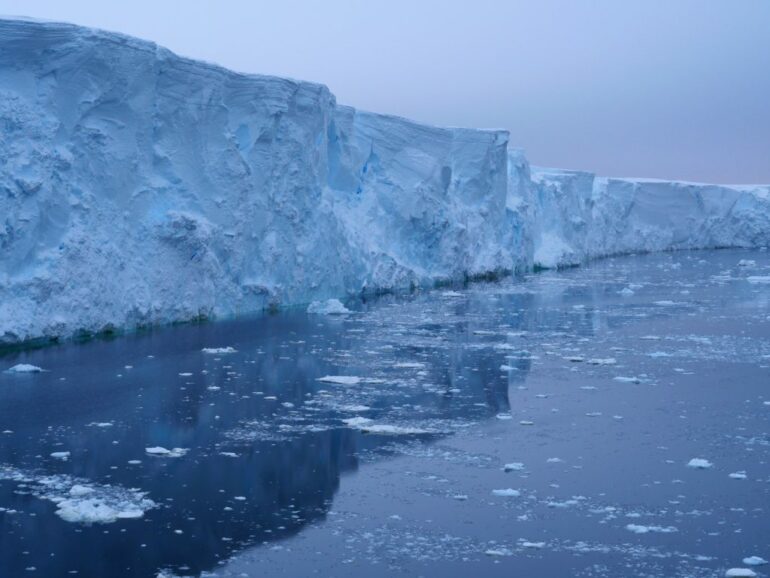Among the vast expanse of Antarctica lies the Thwaites Glacier, the world’s widest glacier measuring about 80 miles on the western edge of the continent. Despite its size, the massive landform is losing about 50 billion tons of ice more than it is receiving in snowfall, which places it in a precarious position in respect to its stability.
Accelerating ice loss has been observed since the 1970s, but it is unclear when this significant melting initiated—until now. A new study published in the journal PNAS, led by researchers at the University of Houston, suggests that significant glacial retreat began in the 1940s. Their results on the Thwaites Glacier coincide with previous work that studied retreat on Pine Island Glacier and found glacial retreat began in the ’40s as well.
“What is especially important about our study is that this change is not random nor specific to one glacier,” said Rachel Clark, corresponding author, who graduated from UH last year with a doctorate in geology. “It is part of a larger context of a changing climate. You just can’t ignore what’s happening on this glacier.”
Clark and the study authors posit that the glacial retreat was likely kicked off by an extreme El Niño climate pattern that warmed the west Antarctic. Since then, the authors say, the glacier has not recovered and is currently contributing to 4% of global sea-level rise.
“It is significant that El Niño only lasted a couple of years, but the two glaciers, Thwaites and Pine Island, remain in significant retreat,” said Julia Wellner, UH associate professor of geology and U.S. lead investigator of the Thwaites Offshore Research project, or THOR, an international collaboration whose team members are authors of the study.
“Once the system is kicked out of balance, the retreat is ongoing,” she added.
Their findings also make it clear the retreat at the glaciers’ grounding zone, or the area where the glaciers lose contact with the seabed and start to float, was due to external factors.
“The finding that both Thwaites Glacier and Pine Island Glacier share a common history of thinning and retreat corroborates the view that ice loss in the Amundsen Sea sector of the West Antarctic ice sheet is predominantly controlled by external factors, involving changes in ocean and atmosphere circulation, rather than internal glacier dynamics or local changes, such as melting at the glacier bed or snow accumulation on the glacier surface,” said Claus-Dieter Hillenbrand, U.K. lead investigator of THOR and study co-author.
“A significant implication of our findings is that once an ice sheet retreat is set in motion, it can continue for decades, even if what started it gets no worse,” added James Smith, a marine geologist at the British Antarctic Survey and study co-author.
“It is possible that the changes we see today on Thwaites and Pine Island glaciers—and potentially across the entire Amundsen Sea embayment—were essentially set in motion in the 1940s.”
Dating of sediment cores plays key role in study
Clark and the team used three primary methods to reach their conclusion. One of those methods was marine sediment core collection that was closer to the Thwaites Glacier than ever before. They



